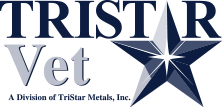We brush our teeth after every meal. Does the same hold true for dogs? How is canine tooth brushing performed?
The answer is that human and canine teeth possess some similarities. That means they are vulnerable to the same types of dental and periodontal problems. Your dog’s baby teeth fall out by the age of six months. The permanent teeth must last a lifetime. Good dental care can extend the length of your best friend’s life.
Benefits of Teeth Brushing
By the age of 3, most dogs display symptoms of periodontal disease. Plaque is the culprit causing gingivitis, the initial stage of periodontal disease. Untreated, periodontal disease leads to infection and tooth loss. Brushing eliminates the plaque that soon mineralizes into tartar and damages teeth. With regular brushing, your dog should not have bad breath.
While you may not have the ability to brush your dog’s teeth after every meal, try to establish a regular schedule. Brushing at least two or three times a week can help prevent dental disease.
Teeth Brushing Basics
For best results, start brushing your dog’s teeth in puppyhood so they get used to the process. Of course, if you adopted an older dog or want to start brushing your grown dog’s teeth, it may take time and patience. Some dogs will not cooperate, but most will eventually get the hang of teeth brushing and even enjoy it.
Purchase a toothbrush and toothpaste designed for dogs. The size of the toothbrush correlates to the size of your pet. Soft toothbrushes created for babies are an alternative. Choose the right time and setting for tooth brushing. Wait until your dog and household are quiet and relaxed.
Brushing the entire mouth the first time is probably unrealistic. However, you can start by gently massaging their mouth and teeth. You don’t want your dog to bite. When they get used to that, usually over a few weeks, the next step is rubbing a soft cloth on the outer surfaces of the teeth.
When they are good with the cloth, let them taste the toothpaste. Put it on a cloth and rub gently as before. If they’re OK with that, brush a few teeth next time and give your dog lots of praise. Brushing must remain a positive experience.
Brush the teeth in small, circular motions. Don’t try to do the entire mouth. Instead, take a break every few seconds to pet or praise your pet. When toothbrushing becomes routine, you should be able to clean the entire mouth in less than one minute.
Brushing Alternatives
Some dogs are not going to tolerate brushing. If that’s the case, there are alternatives. For example, your veterinarian can recommend healthy dental chews that may remove plaque. There are additives that can be incorporated into your pet’s water or sprayed into the mouth.
Annual Dental Exam
In addition to brushing, it’s vital that your dog receive an annual dental exam. Depending upon the condition of your dog’s mouth, your vet may recommend professional cleaning.
Contact Us
The animal care experts at TriStar Vet design and manufacture veterinary exam tables, vet grooming equipment, and other innovative products for your vet clinic that are ergonomic, ultra-durable, and affordable.

